|
 Secure Site
Secure Site
|
 |
Archive for the 'mindfulness practice' Category
 Snow at Itsukushima by Watanabe Shozaburo 1. Power
Giving to others is the most powerful thing we can do for ourselves.
2. Honor
Approach gift shopping as an opportunity to honor the people you really love.
3. Strength
Share your strengths — and be open to others’ gifts.
4. Need
Help others because they need it, not because you need to provide it.
5. Kindness
Kindness is in our nature; practice giving and receiving it freely.
6. Discovery
Teach what you know, and you’ll discover what you’re ready to learn.
7. Presence
Simply being present is often the most valuable gift you can give.
8. Abundance
Contribute to abundance: If you no longer need something, pass it on.
9. Contribution
Give yourself time to consider what you most want to contribute to the world.
10. Welcome
The right gifts are just as welcome in simple packages.
adapted from Body + Soul Magazine, 2009
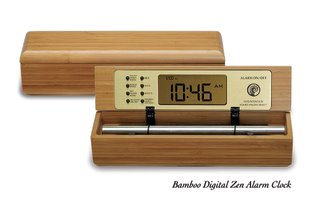 Natural Chime Alarm Clocks and Timers Now & Zen
1638 Pearl Steet
Boulder, CO 80302
Posted in Bamboo Chime Clocks, Beauty, intention, mindfulness practice
 how to start a walking meditation Instructor John LeMunyon, co-owner of Heartwood Yoga and Body-Centered Therapies (heartwoodyoga.com) in Birmingham, Ala., is a licensed massage therapist and registered yoga teacher whos been meditating for over 25 years.
What is it? This component of numerous meditation traditions slows the walking process with the intention of bringing into awareness its most basic partslifting the foot, swinging it, placing it downin order to bring a greater consciousness to daily life. When we break down the motion of walking, we realize how each action is actually a collection of sub-actions, and how the mind and body work together to create physical movement. This is not walking for transportation, its walking as a tool for developing mindfulness in the present moment, says LeMunyon.
You can practice walking meditation by itself, or combine it with one of the seated styles. Used as an interlude, the walking technique is a good way to embody the insights gained during seated practice and heighten their relevance to daily life.
Walking meditation shows clearly the Buddhist precept that all action is preceded by intention, says LeMunyon. Theres always an intention, and when we are present to the moment there is always a choice. Its at the level of intention that we make our choices of how skillfully we want to live our lives.
Whats it good for? When you find yourself restless or agitated, a physical practice like walking is a great way to quiet the mind and find grounding in the body. It can also help ease the transition from sitting meditation to the motion of real life, and vice versa.
How long does it take? To begin, try walking for about 15 steps in two directions, about five minutes. Beginners can try interspersing this with five minutes of sitting meditation.
 mindfulness walking How Do I Do It?
1. Find a private place indoors or out with level ground and at least 20 feet of space.
2. Stand in a relaxed position with your feet parallel, shoulders loose, arms draped at your sides or clasped lightly in front of or behind you. Focus your eyes softly on the ground about 6 to 8 feet ahead (looking right at your feet can be distracting).
3. Breathe in again as you lift the heel of your right foot. Pause and breathe out, leaving your toes resting on the ground.
4. Breathe in as you slowly swing your right foot forward. Place the heel of your right foot on the ground as you exhale and roll the rest of the foot down, transfering your weight so its balanced equally between both feet. Pause for a full breath.
5. Repeat with your left foot, matching each movement with an inhalation or exhalation, and continue for about 15 steps. The goal is to keep your mind fully focused on your bodily sensations; it may help to think or softly say, lift, pause, swing, place, transfer, pause as you perform these movements.
6. When youve completed your paces in one direction, come to a stop with your feet parallel, and pause for a few breaths. Then turn slowly, using the same movement pattern, and match each movement of your turn with an inhale or exhale. Pause again, facing the path you just walked. End by retracing your steps back to where you started.
Tip: You may feel self-conscious walking this way, so try it in your hall or backyard rather than a park where onlookers may distract you.
adapted from Natural Health Magazine, By Frances Lefkowitz
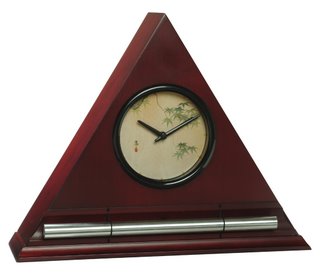 Zen Chime Clock, Meditation Timer and Alarm Clock for A Progressive Awakening Now & Zen
1638 Pearl Street
Boulder, CO 80302
(800) 779-6383
Posted in intention, Meditation Timers, Meditation Tools, mindfulness practice, Zen Timers
 mindful eating Conscious eating
Just as you bring mindfulness to your yoga practice, you can be mindful at mealtime. Yoga philosophy and all of the world’s healthiest diets recommend a conscious eating practice for optimal health. Mediterranean cultures traditionally regard meals as experiences to be savored and a life pleasure meant to be enjoyed. Asian cultures consider eating an aesthetic experience and reverentially enjoy beautifully prepared and presented foods that nourish the senses—to see, smell, touch, taste, and observe any sounds—while slowly eating the meal.
The Slow Food movement is reviving and sharing the benefits of conscious eating and the enjoyment of wholesome foods. Slow Food USA, part of the international Slow Food movement, is dedicated to supporting local farmers, the production of regional foods, and small producers. The movement promotes a slower lifestyle that cultivates time for conscious food preparation and eating, and opposes the fast life exemplified by corporatized foods and degradation of farmland.
 conscious eating, a mindfulness practice Eat Here Now
How can you incorporate mealtime mindfulness into your own life? Try the following essential components of a conscious-eating practice.
1. Schedule time for meals. Allocate at least twenty minutes each for meals and/or enough time to truly experience the food you eat. Avoid overeating. Set your Zen Timer for at least 20 minutes.
2. Eliminate distractions during meals. Eat slowly in a calm, quiet environment without a blaring television, loud music, or your computer as an accompaniment. The experience of the meal should be the focus of your attention and entertainment.
3. Enjoy conscious eating. Practice a state of awareness while you eat. Savor the appearance, smell, and taste of your food, so you can be truly satisfied. Chew each bite twenty times, which will help digestion and keep your attention in the moment. Enjoy the rasa, or “juice” of the food, through our senses.
4. Practice snacking awareness. Avoid mindless snacking, eating while you’re talking, and snacking just because food is present.
5. Use tasteful presentation. Small portions beautifully arranged on an attractive plate nourish the senses and encourage you to savor each bite.
6. Practice cooking meditation. Feed your soul by incorporating mindfulness as you cook. Allow cooking to express your love and be the ultimate gift to others, as the food we eat literally becomes a part of us physically, mentally, and spiritually, in our cells, skin, bones, and thoughts.
7. Count your blessings. Before your meal, experience a moment of thankfulness for having food.
adapted from Natural Home Magazine, November/December 2005 by Elaine Gavalas
 Bamboo Zen Timers with Chime Now & Zen
1638 Pearl Street
Boulder, CO 80302
(800) 779-6383
Posted in Beauty, Chime Alarm Clocks, intention, Meditation Timers, mindfulness practice, Well-being, Zen Timers
 Body and soul in balance An imbalance in your mental energy can leave you unable to focus. Break the pattern, and you’ll effectively return to the present moment — and the task at hand. “I call it changing your state,” says Lucy Jo Palladino, Ph.D., psychologist, attention expert, and author of “Find Your Focus Zone.”
One of Palladino’s tried-and-true balancing practices is four-corner breathing, which combines the use of an outer focal point (a window, a picture frame) with deep, rhythmic breaths. Try this meditation to jolt yourself into high gear or settle a skittish mind. It lowers adrenaline, restores balance, and resets your attention, helping you focus.
Four-Corner Breathing How-To
1. Find an object nearby that has four corners — a box, your monitor, or even this page.
2. Start at the upper-left-hand corner and inhale for 4 counts.
3. Turn your gaze to the upper-right-hand corner and hold your breath for 4 counts.
4. Move to the lower-right-hand corner. Exhale for 4.
5. Now shift your attention to the lower-left-hand corner. Tell yourself to relax and smile. Repeat 3 to 5 times, or as often as you like.
adapted from Body + Soul Magazine, June 2008 by Jill Russell
Use our unique “Zen Clock” which functions as a Yoga & Meditation Timer. It features a long-resonating acoustic chime that brings your meditation or yoga session to a gradual close, preserving the environment of stillness while also acting as an effective time signal. Our Yoga Timer & Clock can be programmed to chime at the end of the meditation or yoga session or periodically throughout the session as a kind of sonic yantra. The beauty and functionality of the Zen Clock/Timer makes it a meditation tool that can actually help you “make time” for meditation in your life. Bring yourself back to balance.
 Zen Timepiece with brass bowl, a perfect meditation timer with gentle gong Now & Zen – The Zen Alarm Clock & Meditation Timer Store
1638 Pearl Street
Boulder, CO 80302
(800) 779-6383
Posted in intention, Meditation Timers, Meditation Tools, mindfulness practice, Well-being, Zen Timepiece by Now & Zen, Zen Timers
 Set your Zen Alarm Clock at Night Today, in our too-fast, information-overloaded society, we’ve lost much of our connection to the Earth, to spirit, to nature’s cycles, to our own cycles. And yet, we still need things to feed us, to ground us, to give us courage and connection.
Good rituals are essential to our emotional, psychological, and spiritual health. To help reconnect us to the sacred aspects of our lives, we asked an expert to share everyday rituals that they’ve created or practice.
Sleep Practice
Bedtime is when we drop our defenses and become vulnerable. This is why most religions have a tradition of bedtime prayers, says Alexander. Today, she believes, most insomnia and disturbed nights are caused by overactive minds mulling over the day’s problems.
 chime alarm clock for a peaceful sleep
Intention
To mark the break from day to night and ease into a state of physical and mental relaxation.
Materials
Lavender oil, notebook, and writing utensil.
Steps
1. Change (or bathe) with intention. As you take off your clothes, visualize all your daytime anxieties and concerns dropping away. As you wash, imagine that you cleanse away all the negativity of the day.
2. Write down all the positive things that happened during your day.
3. Dab the Lavender oil on a handkerchief and place it near the bed. Lie down, breathe in the soothing scent of the oil, and cast your mind back over the day without judgment.
4. Set your Zen Alarm Clock to the time you need to wake up in the morning right before you go to bed. Use your Zen alarm clock to not only wake you up gradually in the morning, but as a blocker of all negativity. When your alarm clock is set, don’t think about your problems or agenda for tomorrow; instead concentrate on your breathing so you fall asleep peacefully.
Now & Zen Alarm Clocks has adapted this from Body + Soul Magazine
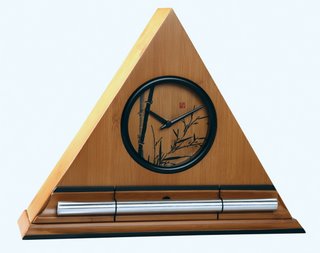 Chime Alarm Clock For a Progressive Awakening Now & Zen
1638 Pearl Street
Boulder, CO 80302
(800) 779-6383
Posted in Chime Alarm Clocks, intention, mindfulness practice, Now & Zen Alarm Clocks, Progressive Awakening, sleep, Sleep Habits, wake up alarm clock, Well-being
 be one with nature “Thoreau said that nature is a tonic for the soul,” says renowned herbalist Rosemary Gladstar, author of “Rosemary Gladstar’s Herbal Recipes for Vibrant Health,” and it’s equally nourishing for the body. “I think disconnection from the natural world is the cause of most of our health problems. We need nature to feel whole.” Taking a daily walk “offers a dose of the best medicine,” says Gladstar. “Get out in the woods if you can, but even a city park will do the trick — anywhere there’s earth and sky and plants and maybe a little water. Let the wind wash your troubles away. You’ll feel great. Your soul will eat it up.”
adapted from Body + Soul Magazine
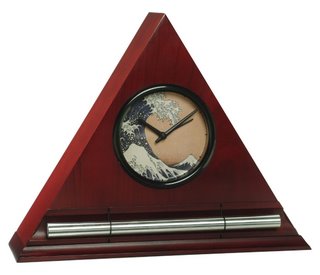 Hokusai Wave Zen Alarm Clock Now & Zen
1638 Pearl Street
Boulder, CO 80302
Posted in intention, mindfulness practice, nature
 Savasana Pose - mindfulness practice Savasana, (corpse pose) is a relaxing posture that is intended to rejuvenate the body, mind and spirit. It is recommended that you set aside 20 minutes every day for Savasana , the most restful of the yoga positions. Here are some tips to get you started:
1. Set your meditation timer for 20 minutes so you don’t have to watch the clock. Use the Bamboo Zen Timer by Now & Zen with a calming chime. 2. Lie down on your back on a soft yet firm surface, such as a rug (but not a bed). Place a rolled pillow or blanket under your knees if that feels good, and cover your eyes with a soft cloth. Cover yourself with a light blanket.
3. Let your arms and legs roll slightly out from the body as you relax and begin to take a series of long, slow breaths, setting an intention to disengage from the external world. If your mind starts spinning away, simply return your attention to the breath.
4. When the meditation timer chimes, bend your knees, roll to the side, and sit up. After a moment or two of stillness, reengage with your day.
5. Repeat this every day. Savasana is a good way to reduce stress in your life and give you extra energy for the rest of your day.
 meditation timers with chime
Now & Zen
1638 Pearl Street
Boulder, CO 80302
(800) 779-6383
Posted in Meditation Timers, Meditation Tools, mindfulness practice, Well-being, yoga, Yoga Timer, Yoga Timers by Now & Zen, Zen Timers
 well-being practice, walking in nature to relieve stress It’s hard to feel tired or anxious while hiking in the wilderness or staring out at a blue expanse of ocean. “Nature has built-in mechanisms for relieving stress,” says Doreen Sweeting, M.D., founder of Psychosomatic Wellness Intuitive Life Coaching. “There’s aromatherapy in the scent of the pine trees and grass, chromatherapy in the colors of the rocks and sky and flowers, sound therapy in the birdsong and wind rustling the leaves.”
Our society, unfortunately, is increasingly cut off from this wellspring of energy. “We live in artificial light. We walk on concrete. We exercise on machines,” Sweeting says. “We go from home to work to the store and back home.”
Exhaustion Cure: Take a Morning Walk
Whether you live in a suburb or a bustling city, take a walk first thing in the morning — if possible, in an area filled with trees. “You’ll feel the energy of nature replenishing you,” says Sweeting. “The tree huggers are on to something.” As often as possible, venture deeper into the woods by planning day hikes or overnight camping trips.
Make an extra effort to notice the changing seasons. “You’ll start to realize the rhythms of nature apply to you, too,” Sweeting concludes. “When you harmonize yourself with nature, you’ll develop a stronger sense of well-being. The body responds quickly to being honored in this way. And it can all start with getting out to the park.”
adapted from Body + Soul Magazine, March 2009
 wake up alarm clock with chime, a tool for relieving stress Now & Zen
1638 Pearl Street
Boulder, CO 80302
(800) 779-6383
Posted in mindfulness practice, Well-being
 autumn, a time for wellness In Chinese medicine, fall represents a return to the roots, a time of restoring and building our qi for the following spring. “This isn’t a time of growth, but of consolidation,” says Maoshing Ni, Ph.D., director of the longevity program at Tao of Wellness Center in Santa Monica, California. “It’s when we replenish ourselves for the following spring.” Whereas summer’s expansive energy calls us out — to backyard gatherings, family vacations, block parties — autumn speaks to the introvert in each of us, inviting us to get back in touch with our nesting instincts.
Here, we offer an action plan to clean, green, and beautify the space in which you’ll be spending a lot more time once the weather turns cold. Time to make your home as warm, welcoming, and healthy as possible — while nourishing your spirit in the process. Rather than stumble into fall, why not mindfully prepare for it? Once you reorganize and revitalize your surroundings, you’ll be ready for everything the season has to offer.
adapted from WholeLiving.com, October 2010
 Dream Kanji Zen Alarm Clock with chime in Dark Oak Finish, a wellness tool Now & Zen
1638 Pearl Street
Boulder, CO 80302
(800) 779-6383
Posted in mindfulness practice, Well-being
 a walking practice You know that a brisk walk around the block can clear your head. But it can do even more. Walking rivals yoga, meditation, and tai chi as a powerful mindfulness practice, says Danny Dreyer, a running coach, ultramarathoner, and creator of the ChiRunning and ChiWalking programs. Dreyer has spent years teaching people how to use walking to relieve physical and mental stress by moving in a relaxed way and focusing on physical sensations.
In the following exercise, Dreyer shows how to elevate a simple walk to a meditation in motion, just by using breath and awareness to target tension and trigger the body’s relaxation response. Try this simple stress reliever before an important meeting, after a workday, or any time you need to recapture a calmer, more centered state of mind.
Find a Quiet Place
Choose to walk somewhere soothing — around a lake instead of along a busy road, for instance.
Tip: Don’t rush. Your goal here is to unwind, not to break a sweat or clock in miles. Do your best to maintain an easy gait.
Go Easy
Keep your pace comfortable (as if you don’t need to get anywhere fast) and your stride short.
Breathe Away Tension
Start with your head and observe any tension you might be feeling there. Take a deep inhale, and then with each exhale, imagine releasing tightness in your head and neck. Continue with your shoulders, arms, chest, belly, glutes, upper legs, lower legs, and feet. Spend several breaths on each area, gradually inviting every part of your body to relax. Repeat this exercise.
Take Time to Unwind
Walk for at least 15 minutes, or longer if you have time.
Tip: Focus on tension hot spots throughout your body; this will help you open up and unwind.
adapted from Body + Soul Magazine, September 2007 by Kate Hanley
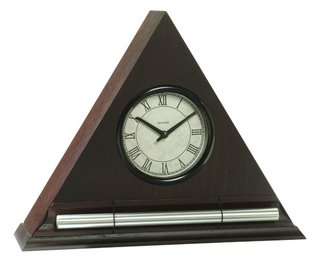 Dark Oak Zen Alarm Clock with Chime, a Meditation Timer
Now & Zen
1638 Pearl Street
Boulder, CO 80302
(800) 779-6383
Posted in Chime Alarm Clocks, intention, Meditation Timers, Meditation Tools, mindfulness practice, Now & Zen Alarm Clocks, Well-being, Zen Timepiece by Now & Zen, Zen Timers
« Previous Page — « Previous Entries
Next Entries » — Next Page »
|
|
|
|